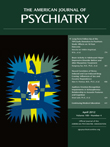Neural Correlates of Stress-Induced and Cue-Induced Drug Craving: Influences of Sex and Cocaine Dependence
Abstract
Objective:
Although stress and drug cue exposure each increase drug craving and contribute to relapse in cocaine dependence, no previous research has directly examined the neural correlates of stress-induced and drug cue-induced craving in cocaine-dependent women and men relative to comparison subjects.
Method:
Functional MRI was used to assess responses to individualized scripts for stress, drug/alcohol cue and neutral-relaxing-imagery conditions in 30 abstinent cocaine-dependent individuals (16 women, 14 men) and 36 healthy recreational-drinking comparison subjects (18 women, 18 men).
Results:
Significant three-way interactions between diagnostic group, sex, and script condition were observed in multiple brain regions including the striatum, insula, and anterior and posterior cingulate. Within women, group-by-condition interactions were observed involving these regions and were attributable to relatively increased regional activations in cocaine-dependent women during the stress and, to a lesser extent, neutral-relaxing conditions. Within men, group main effects were observed involving these same regions, with cocaine-dependent men demonstrating relatively increased activation across conditions, with the main contributions from the drug and neutral-relaxing conditions. In men and women, subjective drug-induced craving measures correlated positively with corticostriatal-limbic activations.
Conclusions:
In cocaine dependence, corticostriatal-limbic hyperactivity appears to be linked to stress cues in women, drug cues in men, and neutral-relaxing conditions in both. These findings suggest that sex should be taken into account in the selection of therapies in the treatment of addiction, particularly those targeting stress reduction.



